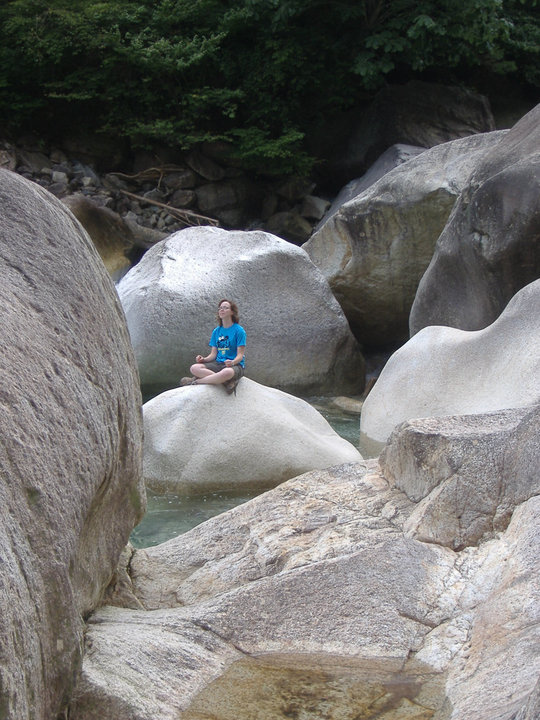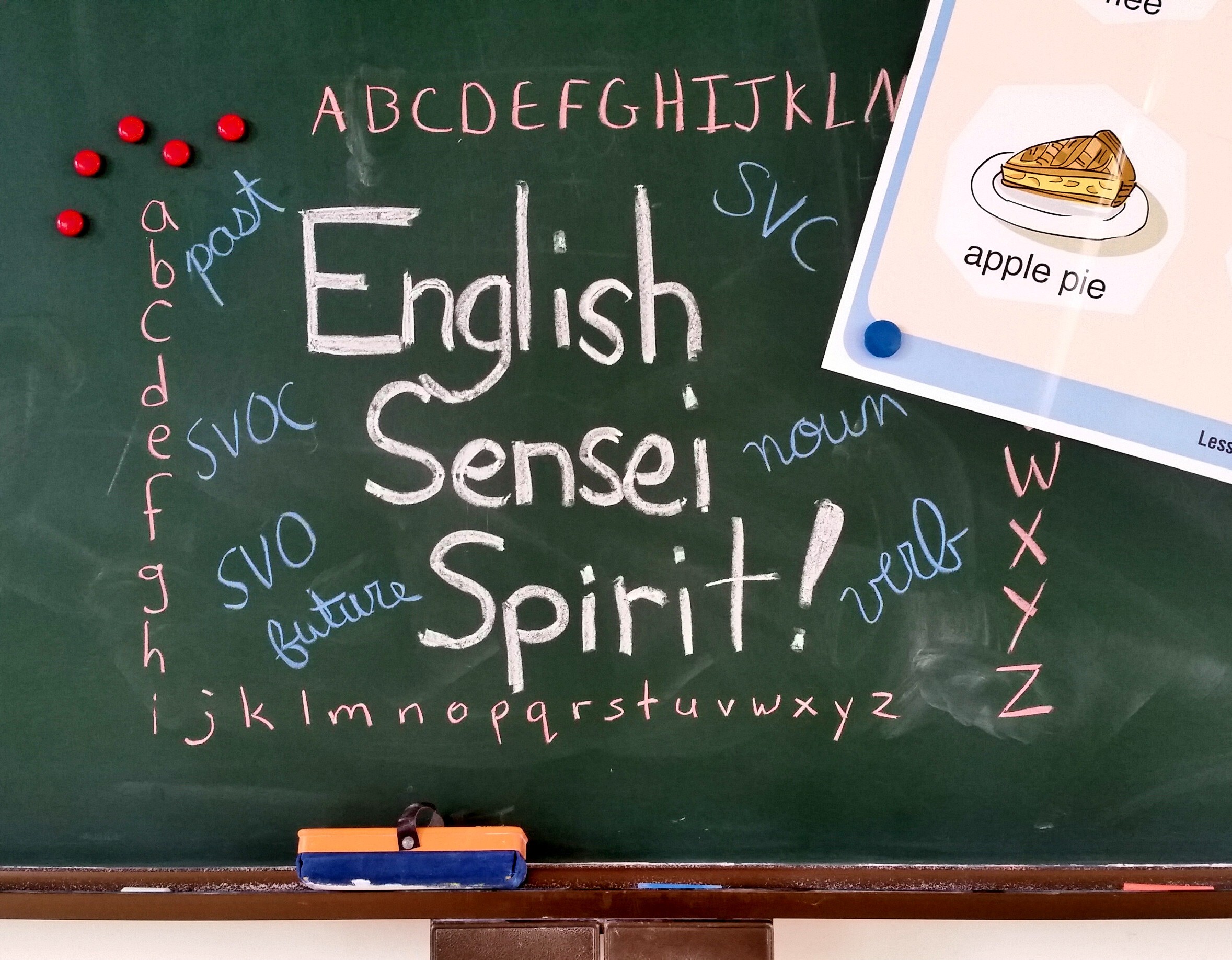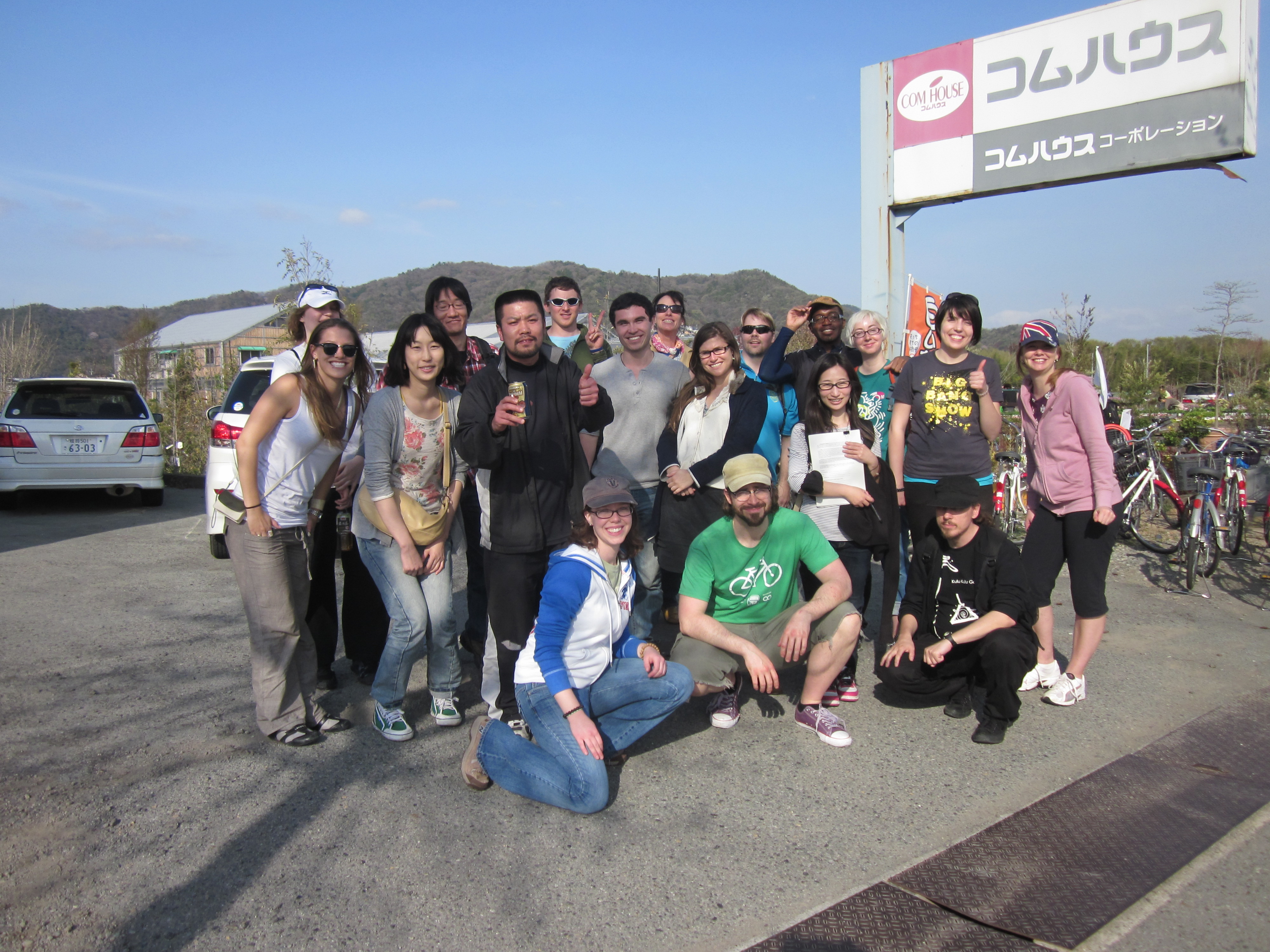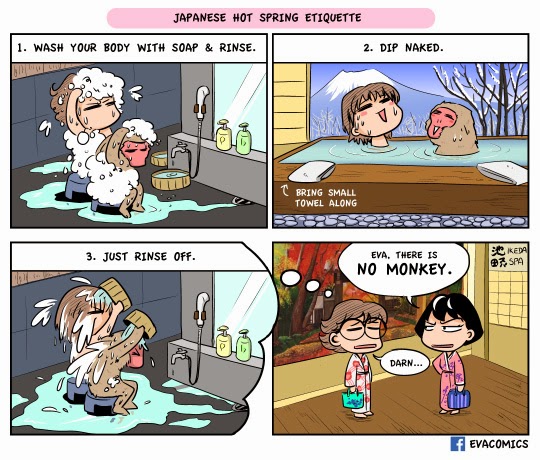No Itch is Eternal
JETs are a varied and interesting group mostly characterized by their relative intelligence (usually anyway) and their flexibility and willingness to try new things. Hey y’all – I’ve got a hell of a thing for you to try!
I first heard about Vipassana from a tour guide in Cambodia, but it seemed like a thing to do in Japan since it’s a Shinto-Buddhist nation. Although it’s not religious or sectarian, the philosophy behind Vipassana is deeply grounded in Buddhist thinking. As many of us learned in high school lit and history classes, the basic tenets of Buddhism hold that life is suffering because of human desires – specifically craving and aversion – which stand between humans and their freedom.
But how not to feel and act with craving for the wonderful things in life? How not to feel and act with aversion to life’s pains? I jumped into Vipassana without quite understanding that this is its focus and purpose. “You have to go to the root of these things,†they said. I pictured each person carrying varying sizes of personal baggage mountains. I imagined the time it would take to peel all those layers back (some much thicker than others) to get to the ‘root level’ underneath it all. How could any person uncover, or even hope to glimpse, this so-called root in a simple manner, and within the span of ten days?
Because that’s what I’m talking about – a ten day residential course with a lifestyle pretty different from what most of us are used to. Basic ground rules were things like total segregation of the sexes – so I lived, ate, and meditated only with the women in the women’s half of the center, walked in the women’s garden, and saw the men only on their side of the meditation hall and from across the driveway that separated our garden from theirs. Noble silence – that is, not talking, nor communicating with gestures – with the other meditators (you can talk to the staff if you need anything or to the teachers if you have a question, naturally). No lying, stealing, or killing (this includes eating meat, incidentally, so all the food provided was vegetarian).
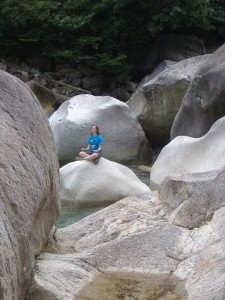 It might seem like being unplugged and not speaking would be difficult, but I actually didn’t have much trouble with that personally. Occasionally I would want to tell someone something, and more often I would think of a question I wanted to ask someone regarding my future travels or plans. In my usual life, when thoughts like that come up, I either make a note or address it immediately (send an email, etc.), but during the course I had no pen, I had no notepad, I had no email. So things had to wait.
It might seem like being unplugged and not speaking would be difficult, but I actually didn’t have much trouble with that personally. Occasionally I would want to tell someone something, and more often I would think of a question I wanted to ask someone regarding my future travels or plans. In my usual life, when thoughts like that come up, I either make a note or address it immediately (send an email, etc.), but during the course I had no pen, I had no notepad, I had no email. So things had to wait.
The eating situation is kind of like being a kid again; there is what there is, and if you don’t like it, that’s just too bad. I think that in itself is a humbling technique. Also, we had fruit for dinner (not dinner…teatime… but it was at 5pm and was the last ‘meal’ of the day) which was sort of delightful.
Our days started at an hour I still consider pretty nuts, but there, and then, it just seemed like part of the lifestyle of the center, however temporary, you kind of get used to it. Every morning, we’d be woken by the bell at 4am, chiming, and chiming again, to rouse us from sleep. From 4:30 to 6:30, we were to meditate either in the meditation hall upstairs or in our own rooms. 6:30 was breakfast and then a break until 8, when we would have an hour long group sitting session, meaning everyone would meditate together for an hour. At 9, we would have our morning instructions, and then meditate until 11, which was lunchtime.
At 1, we would begin to meditate on our own again, and then at 2:30 we’d start the afternoon group sitting. At 3:30, we would receive afternoon instructions and meditate until 5, which was tea time. During tea time, new students (me!) could have fruit, while older students (who had undertaken not to eat after noon) could have only tea, coffee, or water.
At 6, we’d gather for the third and final group sitting of the day, followed at 7 by the discourse. For English speakers this was a video (for non-English, audio only) in which the teacher (S.N. Goenka, in India) would explain particulars, (somehow magically) answer questions I was considering asking at question time, and in general provide a context for what we were practicing. After this, we’d return to the hall, meditate (the Japanese discourse usually took a bit longer than the English one, so I would have a break to brush teeth and otherwise prepare for bed) until 9, and then it was question time, or else bedtime if you had no questions. Lights out was 9:30, which seems early but ISN’T if you get up at FOUR.
If you’ve been counting, that’s about ten hours of meditation each day. You’re doing it constantly, like it’s your job, and for these ten days, it basically is. During breaks, I was mostly walking in the garden, stretching, or napping. I started showering at 4 in an effort to be more awake for the 4:30 – 6:30 meditation time slot.
How I felt about the meditation changed from day to day. Some days I felt great, I was feeling it, everything was going just as I wanted it to – I was alert, engaged, attentive, focused. Other days I sucked at meditation. I couldn’t stay awake, I couldn’t stop daydreaming or narrating or spinning my wheels, I couldn’t feel anything on my body. Sometimes I couldn’t have removed the serene smile from my face with a pry-bar; other times tears would be streaming down my face for no discernable reason.
When I went to the assistant teacher during afternoon question time on about day seven to say “Why can’t I get it to work today if I could yesterday?†The answer was this isn’t about getting it to work, this is about facing reality.
“This isn’t about getting it to work.†Contrary to my previous ideas on what meditation must be, what it must be for (sharper vision, clarity, quieting the mental noise, becoming more centered), this course was, and is, different. All those things are ancillary benefits and almost prerequisites to the real core of what Vipassana is supposed to be about, and what it’s really supposed to do for you.
What the technique teaches is to become aware of sensations on the body, both pleasant and unpleasant, and to not react to them. To feel an itch, to observe it, to not seek its immediate undoing but rather “Let me see how long it lasts. After all, no itch is eternal,†and by so doing, to understand at the level of physical experience that which everyone already knows intellectually; that nothing lasts forever. That every feeling which arises also passes away, that every thing which lives also dies, that every object crafted or built must eventually, eventually, decay and fall away. And if nothing is permanent, then why get so upset? Why get so attached?
It makes sense; we all know that this is naturally so. Build something out of stone and it will last longer, but even that is not forever. Everything good needs replacing. Change is all there is. We know it, we know it. So why do we still get all bent out of shape about it?
The message behind the meditation is that there is this huge gap between knowing something intellectually and understanding it in a way that really sinks in and applies to your life. This gap is the difference between hearing about something, reading about it, knowing about it, thinking about it, and experiencing it for yourself. The aimed outcome of the course is for a person to be able to enjoy good things without reacting to them with clinging and craving, and to endure unpleasant things without panic and aversion; to maintain equanimity at all times with the understanding that this too shall pass.
I wanted to say, this is for everyone, (and it is!) but it’s also not for everyone. I don’t know. It’s hard. It’s a little out there compared to the normal everyday life of myself and most of the people I am close to. I loved it, but I also hated it; I wanted to run away, I wanted it to be over. I wholeheartedly recommend it, but I hesitate to recommend something that was painful to do. And when I say painful, I kind of mean physically. My back pretty much hated me most of the time I was there. During the sittings of ‘strong determination’ (about the second half of the course, the one-hour group sittings become attempts to sit for the entire hour without changing your position) I understood the poetic description ‘singing with pain.’ The course is great, but at times it also sucks. It’s like medicine, it’s like exercise: you don’t always do it because it’s enjoyable in the moment. You do it because it does something for you.
Basically, to really understand it, you have to do it yourself. That was another message that was emphasized there… no one can give you understanding, you have to find out for yourself. And you shouldn’t just take someone’s word for it; you should pass your own judgment based on your own experience!
The course is completely free of charge, and there are two meditation centers in Japan, the older and more established of which is just over the border in Kyoto (not far from Sasayama). If you don’t have the nenkyuu now, you can always wait      ‘til your contract ends in the summer, or even until you get back to your home country! Look at the website, see where the centers are, read all the things, and decide for yourself!
Link to main webpage: www.dhamma.org
Direct link to the schedule for Kyoto center:Â http://www.dhamma.org/en/schedules/schbhanu.htm
